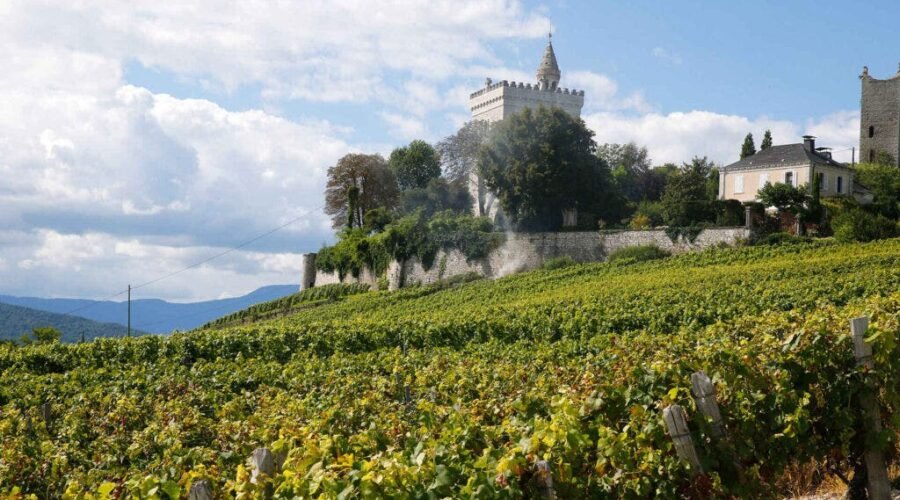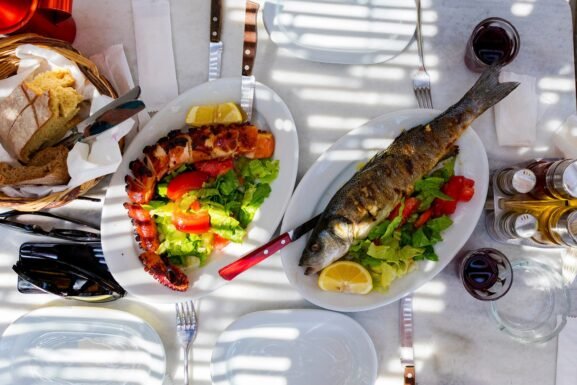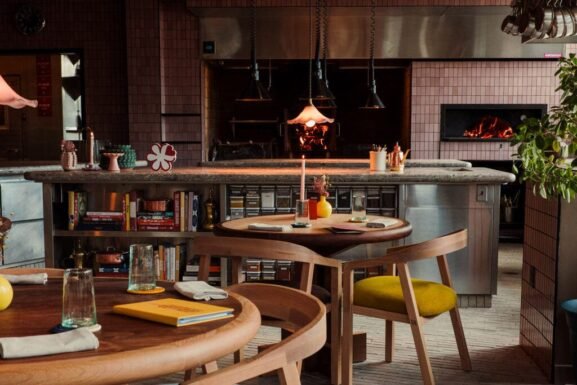Culture: Savoie Has Cult Status Among Wine Pros. Here’s Why.
Some years ago, David Parker, the founder and CEO of Benchmark Wine Group in Napa, spent an evening with buddies indulging in Cabernet Sauvignons from Bordeaux when the tasting’s host invited the group to pick out a bottle from his private cellar. Excited to choose from such an extensive collection, the group picked a 50-year-old wine from a less familiar region. The bottle was marked—incorrectly, Parker would later learn—”Cabernet from Savoie.”
He expected the wine to resemble a Cabernet from Bordeaux or California. However, it drank more like a Barbaresco, with nuances of tar and roses noticeable in every sip. But what was most appealing was how lively, energetic and fresh the wine felt despite its old age.
“It was a real ‘wow’ wine at the end of the evening, and to this day, I continue to be wowed by wines from Savoie,” says Parker. The wine was indeed from Savoie, which sits in the French Alps along the borders of Switzerland and Italy. But Parker later learned that the primary grape was actually Mondeuse, a variety native to the region. It has gradually spread around the globe, hailed for its deep purple hue, crunchy acidity, grippy tannins and flavors that range from red fruits to florals and spice.
Parker is grateful for the experience the wine provided—and he has been hooked on wines from Savoie ever since. He isn’t alone. The bottles from this mountainous region of eastern France have become cult favorites among wine professionals for good reason.
Unique Terroir and Rare Grapes
Savoie is best known for its skiing, stunning mountain views and cheeses. Wine is arguably less of a draw: The region’s annual wine production is just a drop in the bucket in compared to the rest of France at just 15 million bottles per year compared to more than 6.2 billion. Nonetheless, its alpine location, mix of microclimates and abundance of lime-rich soils make Savoie a hotspot for winemaking, particularly of white wine, which accounts for about 70% of production.
“For those of us who are always on the hunt for a wine off the beaten path, it’s tough to be disappointed by Savoie wines,” says Erica Sigler, a New York wholesale manager for Kermit Lynch Wine Merchant.
You May Also Like: The Ascent of Alpine Wine
Also, despite the relatively low production, wines made in Savoie manage to display a diverse range of flavors and profiles. This is largely a credit to the wide array of grapes grown there: Across the three appellations of Savoie—Vin de Savoie AOP, Roussette de Savoie AOP and Seyssel AOP—one can find 23 grape varieties, including classics like Chardonnay, Pinot Noir, Cabernet Sauvignon, Cabernet Franc and Gamay. However, most production focuses on seven rarer varieties, five of which are white. There’s the crisp and zippy Jacquère; age-worthy Altesse; aromatic Bergeron (also known as Roussanne); dry and easy-drinking Chasselas; and Gringet, a variety native to Ayse rarely grown outside the region.
As for the two signature reds of Savoie, there’s the famous red-fruited, sublimely acidic Mondeuse, which is easy-drinking and aromatic when young or more structured and earthy with age. Persan, another indigenous grape variety, is full and rich—also capable of aging for several years.
“The wines from Savoie are super singular,” says Sigler. “There’s nothing really like them—it’s the Alps in a bottle.”
Affordable Bottles Perfect for Pairing
It’s not just the uniqueness of Savoie’s high mountain terroir and rare grapes that have made it a standout for sommeliers. It also offers great bang for your buck.
“It’s the affordability of wines that’s a big draw for me,” says Laura Offer, an advanced sommelier at Wine Access. “You don’t have to spend a ton of money to enjoy wines that are thoughtfully made and full of character.”
Locals in Savoie are the primary consumers of the region’s wines. Exports to the U.S. have ebbed and flowed over the years, but have always been low compared to exports of bottles from better-known French regions. However, the Savoie selections that do trickle into the U.S. are relatively inexpensive. Bottles often start around $12 at retail.
“The prices of these wines are the same as [they were] almost 20 years ago,” says Sigler. “Everything else has gotten so expensive.”
You May Also Like: This Year’s Most Amazing Wines Under $20
Because these affordable bottles run the gamut in terms of flavor profiles—ranging from lean, fresh and crisp to richer, rounder, full-bodied styles—Savoie wines pair well with a wide variety of dishes. Parker likes to pair Mondeuse with white meats, while Offer matches the region’s easy-drinking whites, like Jacquère and Chasselas, with oysters and shellfish, as well as spring vegetables and salads.
“It’s no wonder so many restaurateurs and sommeliers are featuring Savoie wines on menus these days,” adds Parker. “These are really adventurous varieties that have interesting characteristics that make them quite food friendly. And they’re at a reasonable price point. What’s not to love about that?”
Published: January 3, 2024


